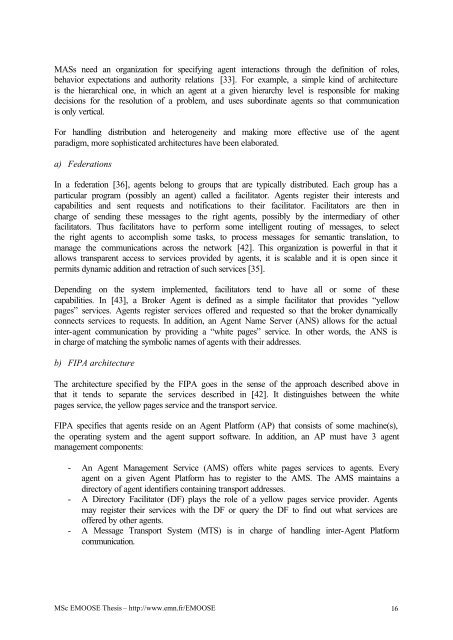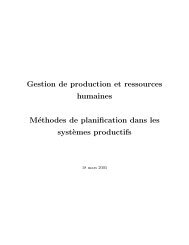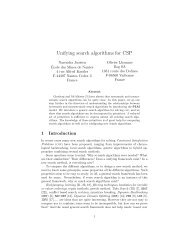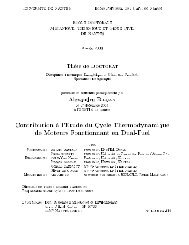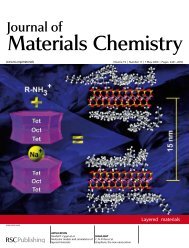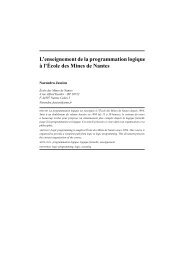pdf - 395 K - Ecole des mines de Nantes
pdf - 395 K - Ecole des mines de Nantes
pdf - 395 K - Ecole des mines de Nantes
You also want an ePaper? Increase the reach of your titles
YUMPU automatically turns print PDFs into web optimized ePapers that Google loves.
MASs need an organization for specifying agent interactions through the <strong>de</strong>finition of roles,behavior expectations and authority relations [33]. For example, a simple kind of architectureis the hierarchical one, in which an agent at a given hierarchy level is responsible for making<strong>de</strong>cisions for the resolution of a problem, and uses subordinate agents so that communicationis only vertical.For handling distribution and heterogeneity and making more effective use of the agentparadigm, more sophisticated architectures have been elaborated.a) Fe<strong>de</strong>rationsIn a fe<strong>de</strong>ration [36], agents belong to groups that are typically distributed. Each group has aparticular program (possibly an agent) called a facilitator. Agents register their interests andcapabilities and sent requests and notifications to their facilitator. Facilitators are then incharge of sending these messages to the right agents, possibly by the intermediary of otherfacilitators. Thus facilitators have to perform some intelligent routing of messages, to selectthe right agents to accomplish some tasks, to process messages for semantic translation, tomanage the communications across the network [42]. This organization is powerful in that itallows transparent access to services provi<strong>de</strong>d by agents, it is scalable and it is open since itpermits dynamic addition and retraction of such services [35].Depending on the system implemented, facilitators tend to have all or some of thesecapabilities. In [43], a Broker Agent is <strong>de</strong>fined as a simple facilitator that provi<strong><strong>de</strong>s</strong> “yellowpages” services. Agents register services offered and requested so that the broker dynamicallyconnects services to requests. In addition, an Agent Name Server (ANS) allows for the actualinter-agent communication by providing a “white pages” service. In other words, the ANS isin charge of matching the symbolic names of agents with their addresses.b) FIPA architectureThe architecture specified by the FIPA goes in the sense of the approach <strong><strong>de</strong>s</strong>cribed above inthat it tends to separate the services <strong><strong>de</strong>s</strong>cribed in [42]. It distinguishes between the whitepages service, the yellow pages service and the transport service.FIPA specifies that agents resi<strong>de</strong> on an Agent Platform (AP) that consists of some machine(s),the operating system and the agent support software. In addition, an AP must have 3 agentmanagement components:- An Agent Management Service (AMS) offers white pages services to agents. Everyagent on a given Agent Platform has to register to the AMS. The AMS maintains adirectory of agent i<strong>de</strong>ntifiers containing transport addresses.- A Directory Facilitator (DF) plays the role of a yellow pages service provi<strong>de</strong>r. Agentsmay register their services with the DF or query the DF to find out what services areoffered by other agents.- A Message Transport System (MTS) is in charge of handling inter-Agent Platformcommunication.MSc EMOOSE Thesis – http://www.emn.fr/EMOOSE 16


